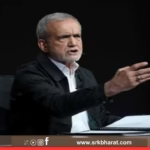In the world of tech innovation and corporate leadership, few figures are as iconic as Jeff Bezos. While known for transforming the global retail landscape through Amazon, Bezos is equally respected—if not feared—for his unconventional management practices. One of the most striking among them is his infamous ban on PowerPoint presentations. Instead, he institutionalized a culture of deep thinking and clarity through a system of six-page narrative memos, which have become legendary inside Amazon’s walls.
This decision, once criticized, is now viewed as a revolutionary move in business communication, setting Amazon apart from its peers in the corporate and tech worlds. At the core of this practice is Bezos’s belief that clear writing reflects clear thinking—and that bullet points often hide poor reasoning or shallow ideas.
Let’s explore the philosophy behind this policy, how it reshaped Amazon’s internal operations, and why it’s a case study for business leaders across industries.
The End of PowerPoints at Amazon: A Radical Shift
In a 2018 panel discussion, Jeff Bezos reiterated a core Amazon principle: “No PowerPoints at Amazon. Instead, we write narratively structured six-page memos.” This wasn’t a spontaneous or surface-level change. It reflected a broader vision to create a culture of rigorous thought and intellectual honesty.
The idea came to life when Bezos noticed that traditional PowerPoint presentations:
- Encouraged oversimplification
- Allowed shallow analysis
- Provided little context or depth
- Fostered passive consumption, not active understanding
Instead of visual slides and flashy summaries, Bezos mandated that every meeting at Amazon begins in silence, with attendees reading a carefully crafted six-page memo. These memos are expected to provide a detailed, well-reasoned analysis of the topic, proposal, or issue at hand.
Anatomy of the 6-Page Memo
At Amazon, the six-page memo is more than a document—it’s a discipline. Each memo must meet rigorous standards in structure, content, and language. It typically includes:
- Title and Author
- Problem Statement
- Background and Context
- Proposed Solution or Recommendation
- Financial/Operational Impact
- Risks and Mitigations
The memo is not a patchwork of emails or slide bullets strung together. It must read like a well-written essay. Clarity of argument, narrative flow, and logical progression are paramount.
Each team member at a meeting receives the printed memo and spends the first 15–30 minutes reading it in silence before any discussion begins. This ensures that everyone is on the same page—literally and figuratively—before debates or decisions are made.
Why This Approach Works: The Bezos Philosophy
Bezos believes that writing forces people to confront their own thinking. In his words:
“Full sentences are harder to write. They have verbs. The paragraphs have topic sentences. There is no way to write a six-page memo and not have clear thinking.”
This method also:
- Encourages thoughtful preparation before meetings
- Eliminates performative or flashy presentation styles
- Promotes a shared depth of understanding
- Encourages questioning of assumptions, data, and recommendations
- Builds a culture of accountability and intellectual rigor
Impact on Amazon’s Culture and Decision-Making
The memo system is so ingrained in Amazon that new employees are trained in “narrative writing” from the very beginning. Managers expect multiple drafts and peer reviews before a memo reaches the boardroom.
This has had profound effects:
| Aspect | Impact of 6-Page Memo Culture |
|---|---|
| Decision-Making | Data-backed, slower but more thoughtful |
| Meeting Structure | Focused, with deeper conversations and fewer distractions |
| Employee Preparedness | High, due to prior reading and synthesis of content |
| Corporate Communication | Written clarity over spoken charisma |
| Innovation Strategy | Ideas are dissected rigorously before resource allocation |
These memos have influenced everything from Amazon Prime’s launch to the company’s AI roadmap and AWS expansion.
Comparison with Other Corporate Communication Styles
| Company | Primary Communication Style | Typical Meeting Format | Results |
|---|---|---|---|
| Amazon | 6-page narrative memos | Silent memo reading + open discussion | Deep analysis, stronger product strategies |
| Apple | Visual + executive-led discussions | Top-down presentations | Design-first decisions, faster turnarounds |
| Data dashboards + slides | Collaborative brainstorming | Innovation-driven but variable depth | |
| Microsoft | Mixed format: slides + reports | Manager-driven PowerPoint sessions | Execution-focused, structured performance |
| Tesla | Elon Musk-led whiteboard briefings | Agile, founder-led conversations | Rapid experimentation, high-risk tolerance |
Amazon’s memo culture, while slower upfront, often leads to long-term clarity and better execution.
Real-World Example: Prime Video Launch
One of Amazon’s most celebrated memos was written in the early 2010s to evaluate the viability of launching a video streaming service—what eventually became Amazon Prime Video. The six-page document detailed:
- Market dynamics
- Competitor analysis
- Cost breakdowns
- Customer behavior projections
- Tech and bandwidth implications
The memo’s clarity helped executives align quickly on goals, risks, and product rollout strategy. Prime Video today has over 200 million users and is a critical part of Amazon’s ecosystem.
Challenges and Criticism
While effective, this memo culture isn’t without criticism:
- Time-Consuming: Writing and reviewing a six-page memo takes far more time than a PowerPoint.
- High Pressure: The standard for logical perfection creates anxiety among writers.
- Not for Everyone: Employees not comfortable with long-form writing may struggle.
Yet, proponents argue that the trade-offs are worth it, as they lead to better decisions and reduced internal politics.
Lessons for Other Organizations
Jeff Bezos’s PowerPoint ban holds valuable lessons for companies of all sizes:
- Invest in Written Communication: Replace hasty bullet points with thoughtful narratives.
- Prioritize Shared Understanding: Silent reading ensures all attendees engage equally.
- Promote Clear Thinking: Writing forces individuals to refine their logic and reasoning.
- Decentralize Charisma: In a memo culture, ideas win—not the loudest voice.
Startups and large corporations alike have started experimenting with internal memo systems, inspired by Amazon’s practice.
Final Thoughts
Jeff Bezos’s rejection of PowerPoint presentations in favor of detailed memos is more than a quirky managerial decision—it’s a cornerstone of Amazon’s culture. The six-page memo format promotes clarity, consistency, and intellectual rigor, creating a fertile ground for high-stakes innovation.
In a business world often obsessed with speed and brevity, Bezos chose depth, thoughtfulness, and quality. And that, perhaps, is one of the most enduring leadership lessons he leaves behind—not just for Amazon, but for boardrooms everywhere.
Disclaimer:
This article is intended for informational and educational purposes only. It is based on publicly available insights into Amazon’s internal communication practices and Jeff Bezos’s leadership philosophy. This content does not represent the official views of Amazon Inc. or its current management.











